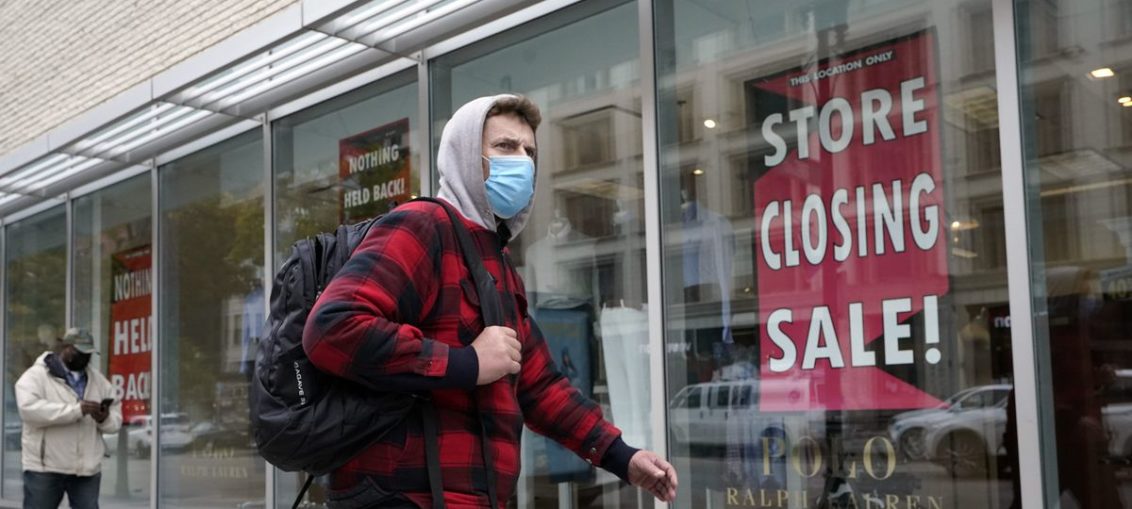
WASHINGTON — The U.S. economic system grew at a scorching 33.1% annual price within the July-September quarter — by means of a long way the biggest quarterly acquire on checklist — rebounding from an epic plunge within the spring, when the eruption of the coronavirus closed companies and threw tens of tens of millions out of labor.
Yet the restoration from the inner most recession for the reason that Great Depression of the 1930s stays a long way from entire. The Commerce Department’s estimate Thursday of third-quarter enlargement regained best about two-thirds of the output that was once misplaced early this yr when the economic system necessarily iced up as protection orders compelled eating places, bars and lots of shops to close down.
The 1/3 quarter GDP acquire was once powered by means of a checklist 40.7% build up in client spending. Americans started buying groceries once more after the spring shutdown, which had despatched client spending plunging by means of a checklist 31.4%. Consumer spending accounts for more or less two-thirds of financial process.
The economic system is now weakening once more and going through renewed threats. Confirmed viral instances are surging. Hiring has sagged. Government stimulus has run out. With no additional federal assist in sight this yr, Goldman Sachs has slashed its enlargement forecast for the present fourth quarter to a three% annual price from 6%.
Thursday’s estimate of enlargement is the remaining main financial record ahead of Election Day, after a marketing campaign that President Donald Trump has sought to construct round his financial checklist ahead of the pandemic hit. Trump has drawn in most cases cast public beef up for his dealing with of the economic system.
Business funding was once up a powerful 20.3% remaining quarter, reflecting a 70.1% surge in funding in apparatus. Residential funding surged at a 59.3%, reflecting a cast rebound being loved by means of house developers as call for for properties rises.
Before the large upward push within the July-September quarter, GDP had fallen 5% within the first quarter when the rustic’s record-long growth of just about 11 years ended after which dropped a checklist 31.4% in the second one quarter when a lot of the rustic close down.
Though the unemployment price, at 7.9%, is down considerably from 14.7% at the beginning of the pandemic recession, it’s nonetheless traditionally prime. And hiring has slowed for 3 immediately months. The economic system continues to be more or less 10.7 million jobs in need of improving all of the 22 million jobs that had been misplaced to the pandemic.
The govt’s estimate of the third-quarter soar within the gross home product — the full output of products and products and services within the United States — was once the most important such build up on information relationship to 1947, surpassing a 16.7% surge in 1950 right through the Truman management. In the January-March quarter this yr, GDP had reduced in size at a 5% annual price ahead of a record-setting 31.4% annual tumble within the spring.
Zandi stated he thinks GDP will regain pre-pandemic ranges by means of spring of subsequent yr, with GDP increasing 4.2% for 2021. But he warned that the task marketplace may now not totally get well till most likely 2023.
“Many of the jobs in retailing, leisure and airlines have been permanently lost,” he stated, “and those folks will have to find different work, and that will take time.”
The govt stories the quarterly GDP adjustments as annual charges. That way the alternate for any given quarter is calculated as though it had took place for a whole yr. Using differently to view the figures, the GDP peaked within the fourth quarter of 2019 after which fell 10.1% over the following two quarters. Even with the 1/3 quarter rebound, the economic system stays 3.4% underneath the height of output set within the fourth quarter of 2019.
Overhanging the economic system now are rising uncertainty and fear as a resurgence of the virus raises the possibility of recent lockdowns and threatens the economic system, particularly with out extra federal lend a hand. That concern has burst into the open this week throughout international monetary markets. On Wednesday, U.S. inventory averages tumbled more or less 3.5%, with the Dow Jones Industrial Average losing 943 issues. The S&P 500 is already down 5.6% this week, heading in the right direction for its worst weekly fall…